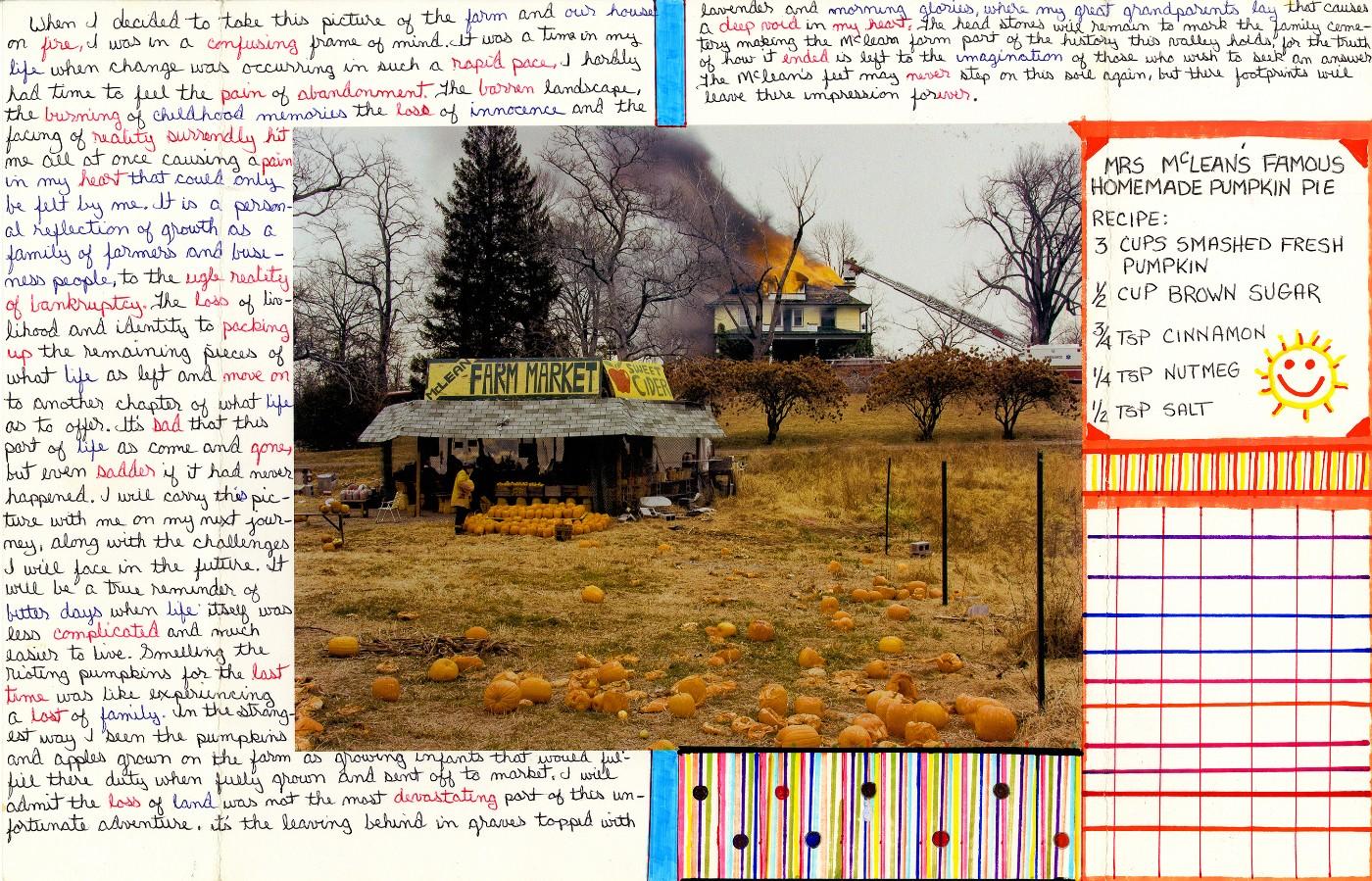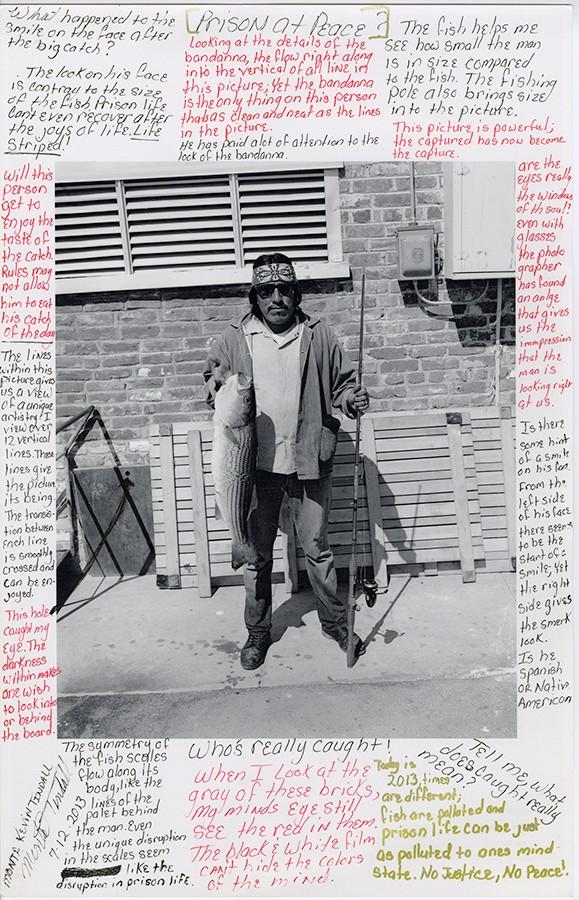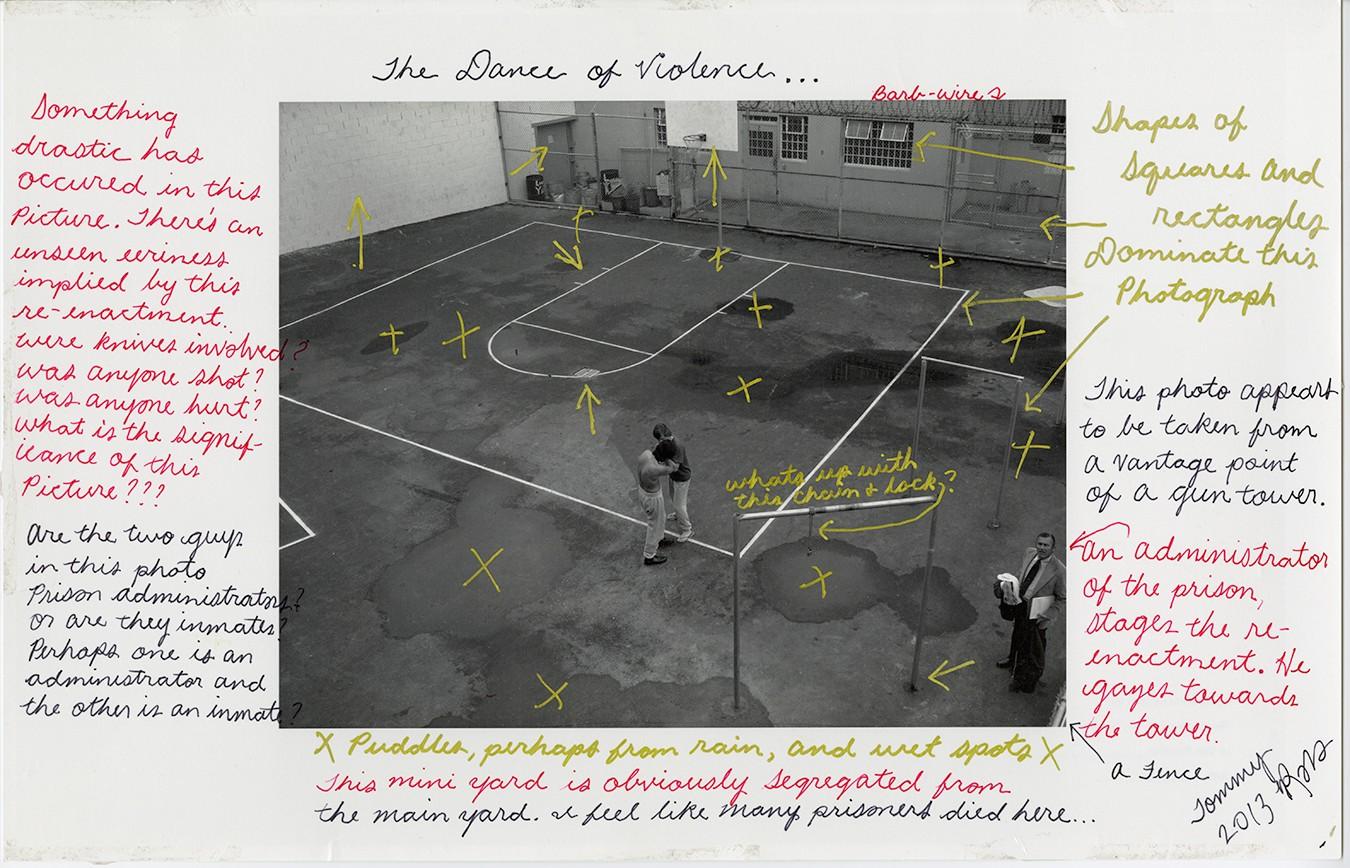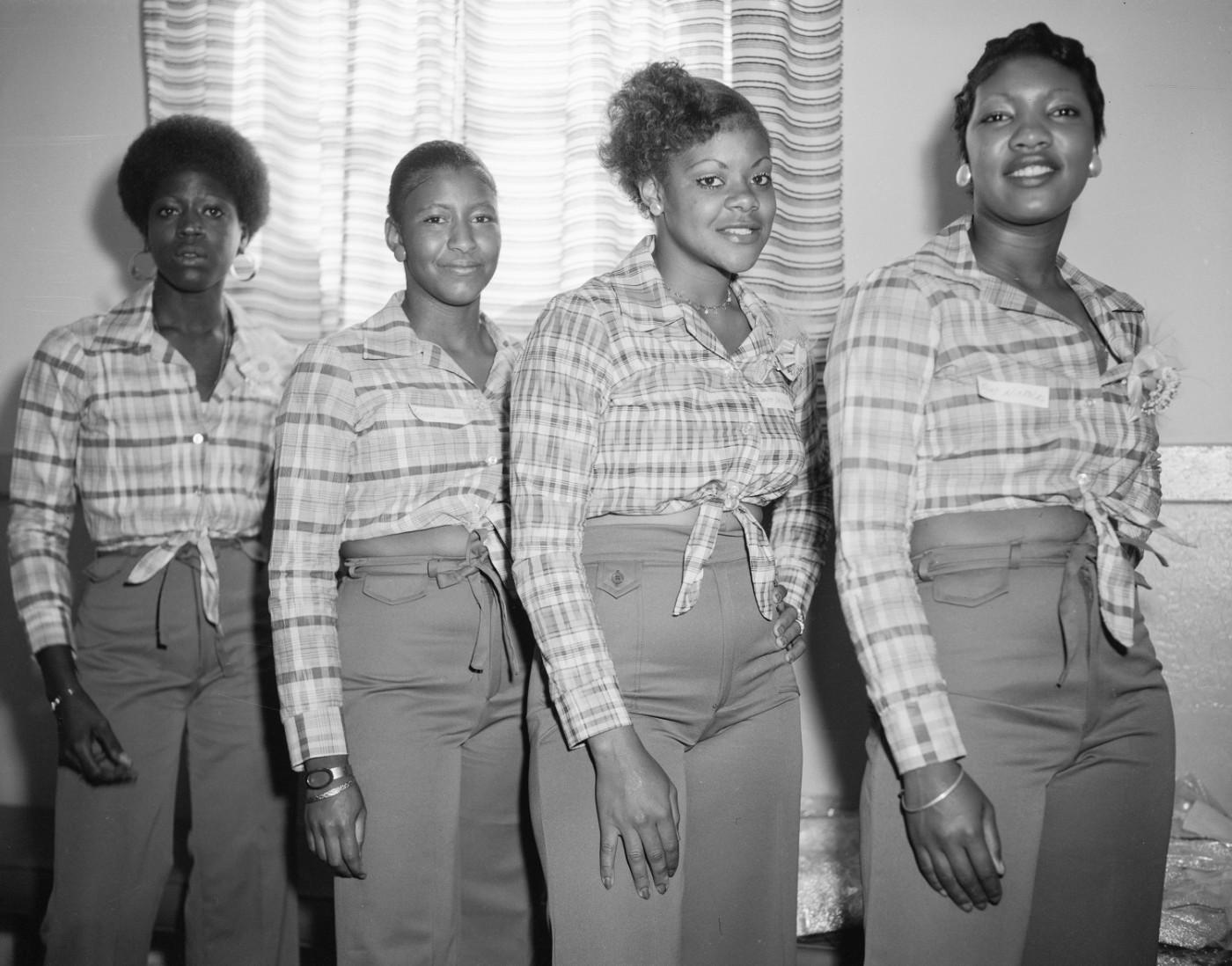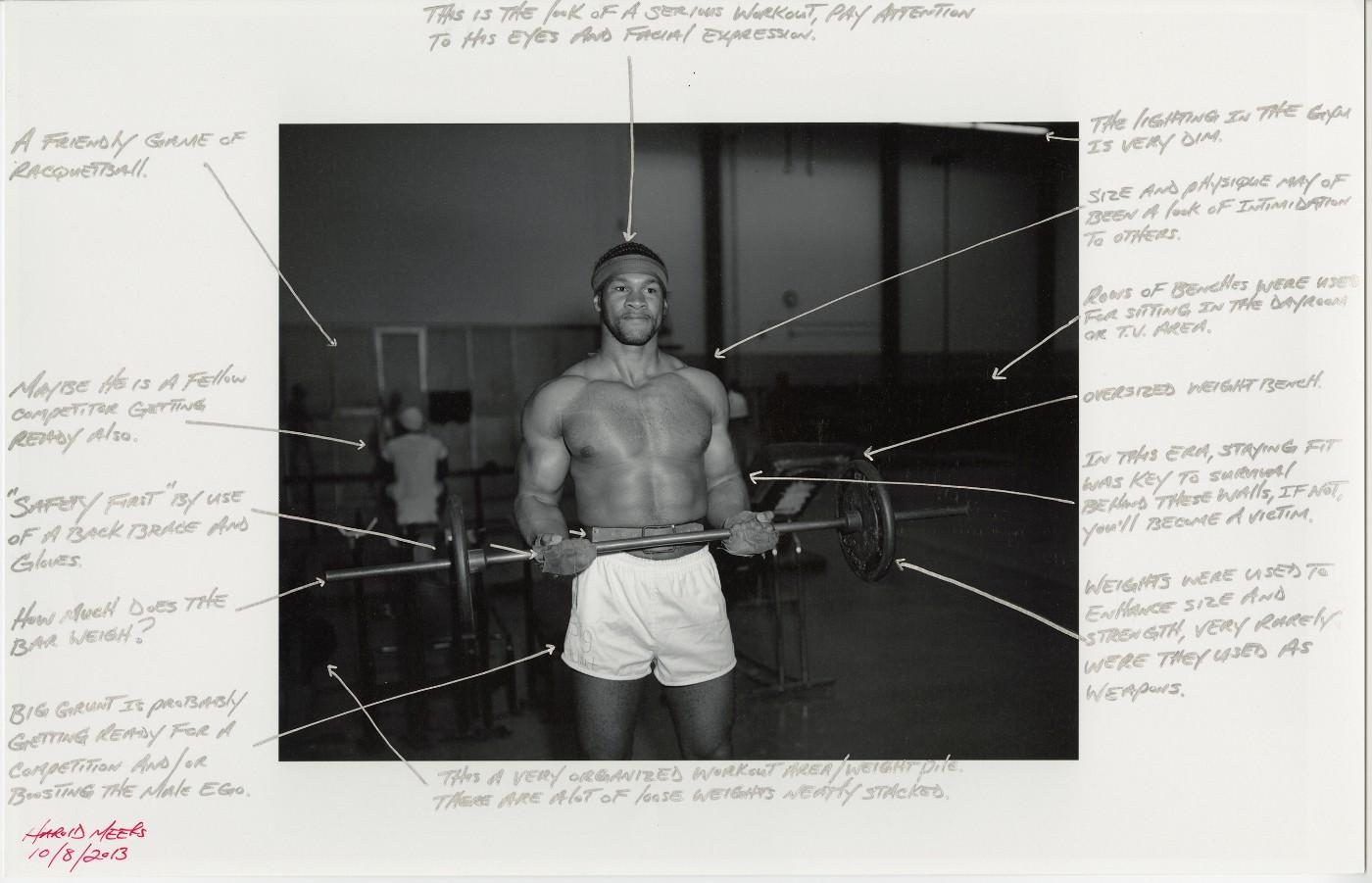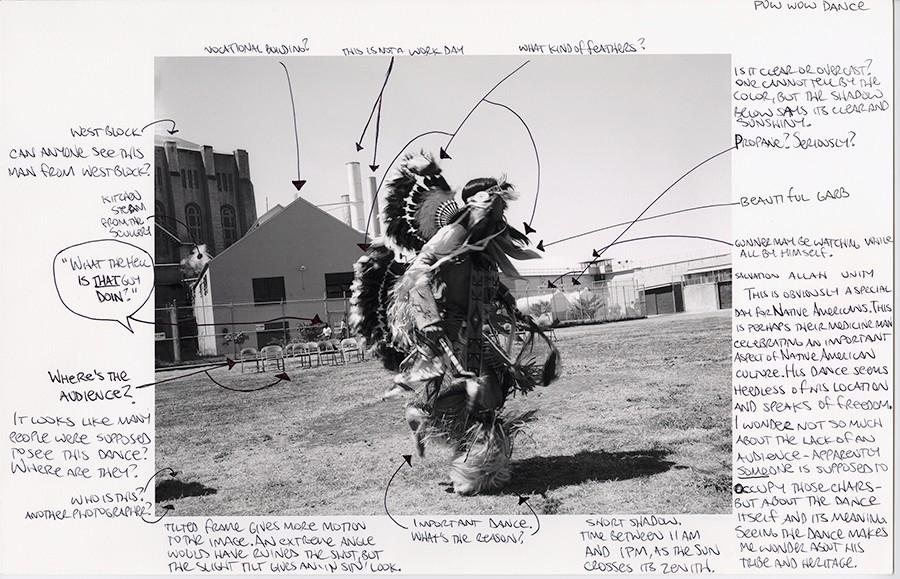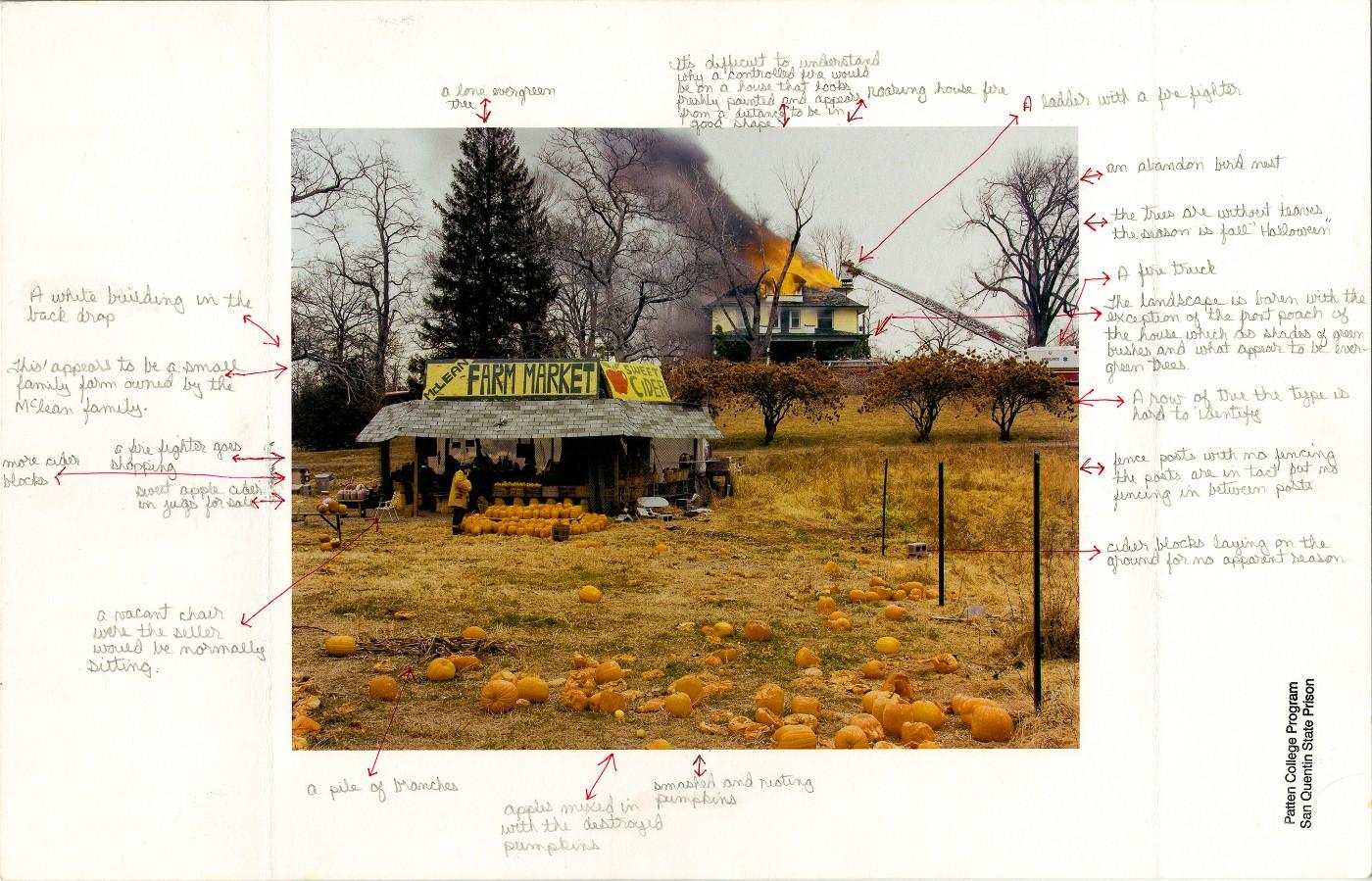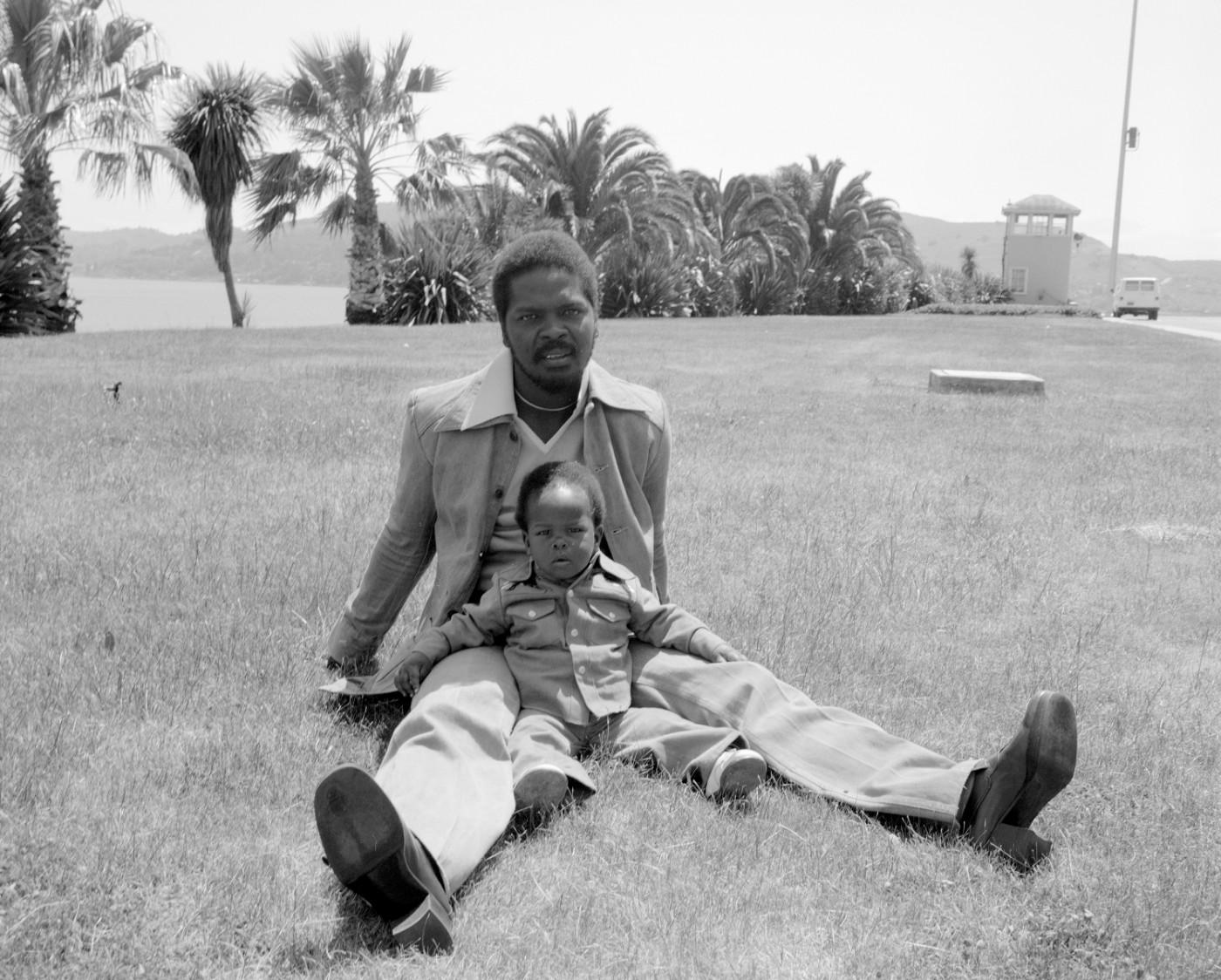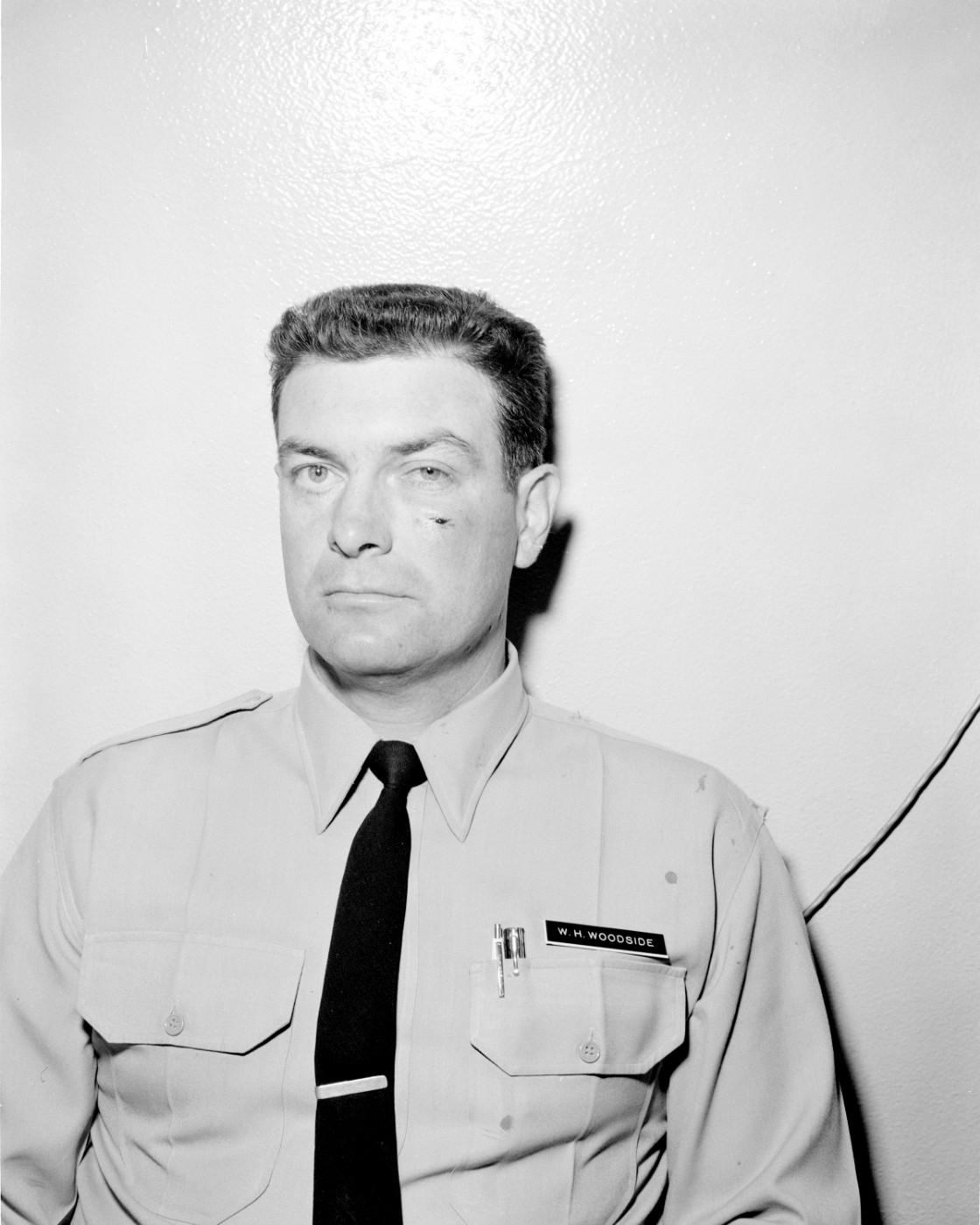Poor has been collaborating with residents at San Quentin since 2011, where she teaches classes on visual literacy and photography. For this exhibition, previously unseen images from the prison’s archives are used as the basis for “mapping exercises.” In this process, the artists annotate the photographs, breaking down the images into smaller parts, identifying the visual elements as well as the stories and memories that they bring up.
What results in an unusual kind of portrait, different from the mugshot-like images of men and women in orange jumpsuits we typically see. An image of the subject themselves is often absent from Poor’s portraits. Instead, we learn about them through their own words, following their train of thought, and constructing our image of them through their stories and the connections they’ve made to a photograph.
This offers an alternative to way prisoner’s stories are usually told: through the mainstream media. Whether it’s television, movies, or the news, representation of incarcerated life rarely includes the unmediated voices of the imprisoned themselves.




